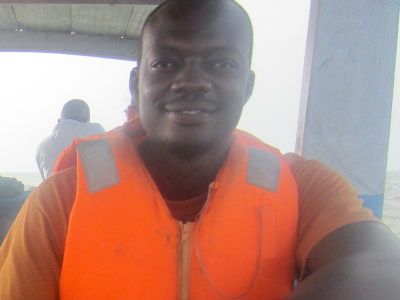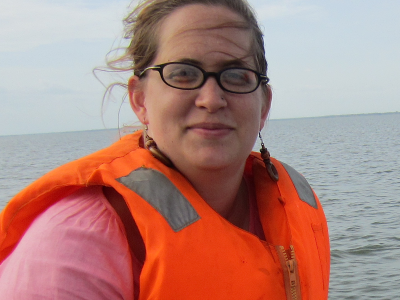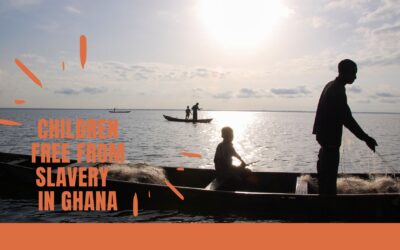Editor’s Note: Early this month, FTS frontline partner group Challenging Heights conducted one of their largest rescue missions ever, targeting 20 villages along 125 miles of shoreline on Lake Volta, looking for Ghanaian children reported to be enslaved on fishing boats. FTS Ghana Director Joha Braimah and Program Manager Christy Gillmore were with the team as the rescues began. We asked them to share their experience.
JOHA: The path to freedom can be as unnerving as the road to slavery. For many Ghanaian children, enslavement means dangerous work aboard small fishing craft on the world’s largest reservoir, Lake Volta. Ironically, when the hydroelectric dam was completed in 1965 to form the lake, it was hailed as a pillar of progress. It is clear that the architects of the project did not anticipate the horrendous economic activity the lake would also bring. The use of trafficked children for fishing on the lake is rampant. Our mission was simple: rescue. But the outcome was far from certain. Rescues are highly unpredictable. Sometimes it can be negotiated calmly, and other times things just don’t go according to plan.
CHRISTY: The weeklong mission was designed to retrieve children identified by their families as trafficking victims. The families live in communities near Accra where FTS frontline partner group Challenging Heights is based. Many of the children had been sent by parents to work on the lake temporarily in exchange for loans. The parents say their loans had been repaid but their children had not been returned.

Children are rarely allowed to eat any of the fish they catch | Photo: FTS/Romano
My nerves were on edge, as I didn’t know what to expect. As the Challenging Heights rescue team entered the fishing zone, we saw boat after boat with small children hard at work, hauling and untangling fishing nets. I tried counting them, but they became too numerous.
JOHA: Most of the children we saw were in boats by themselves, some had adults in the boats with them. These children do not attend school, and many have no clothes to wear. They work from dawn to dusk before returning to shore for a meal. Even though their boats will be loaded with fish, their meals contain little or no fish. All around us were tree stumps in the water. These stumps have been one of the major causes of boat accidents on the lake, and one of the major risks for child slaves. When nets get tangled underwater in these trees, trafficked children are ordered to dive below to clear them. Many children drown.
CHRISTY: There were six experts on this Challenging Heights rescue team. On Day One, the goal was to liberate children from two villages. When we arrived in the first community, we sat with the alleged slaveholders, a husband and wife. The Challenging Heights team explained to them that the mother of a boy and girl they were keeping had asked for her children to be brought home, that she had repaid her small loan. The team told the slaveholders what they were doing was illegal, and the children needed to be brought home and given good care. The husband conceded, but the wife became angry; she yelled that the children had not yet worked off the money she had loaned to their mother long ago. I nervously watched as she used harsh words, hoping her anger would not turn to violence. Finally, after explaining that if she did not give up the children, Challenging Heights would return with police, the wife grudgingly agreed.

Brother and sister, free from slavery | Photo: FTS/Braimah
While the discussion went on, I watched the frightened, enslaved girl in the background, washing dishes. I couldn’t imagine what she was feeling in that moment: fear, anxiety, confusion, resentment? If you’ve been sold to strangers by your own family to work night and day with little food and frequent abuse, what would you think of new strangers coming to take you to yet another place? Who do you trust?
Luckily, the Challenging Heights team understood how to handle the situation. One team member gently approached the girl, speaking quietly with an unthreatening demeanor, and explained where the team would be taking her. After a few minutes of uncertainty, the girl packed a bag with her few belongings and followed the rescue team to the boat. Her brother was working on the lake, so the rescue team traveled to meet him. His initial fear and confusion subsided when he saw his sister already on board.
JOHA: In the second village we encountered huge resistance from the traffickers. This created a bit of a spectacle. The entire community gathered around. Some were in favor of releasing the enslaved children; others were not. We were nearly to the shoreline with one child, but could not take him with us as tempers rose, for fear of what might happen to other children in the village that we had come to release but could not find. We had to leave for our own safety, but with a promise of coming back with police the next day. The threat was effective. The two children on our list of children to rescue, plus another child in that village, were quietly sent back to their parents overnight. The slaveholders must have received a tip-off that we actually did go to see the police.

Challenging Heights team approaches village for a rescue | Photo: FTS/Braimah
We were with the rescue team for just one day, but their work went on for an entire week – visiting village after village along the shore of Lake Volta, freeing 16 children in all. A few lucky ones may have been rescued. But there are still a lot more. Because of the clandestine nature of trafficking, accurate numbers of trafficked children on the lake are not available. Challenging Heights estimates that 24,000 children may be enslaved throughout Ghana, with the majority of them being on Lake Volta.
CHRISTY: We headed back to a Challenging Heights rescue shelter with the two children the team had liberated on Day One. These slavery survivors stayed in the most comfortable setting they had known in years, with ample food and clean water and gentle care. I watched the boy collapse on a foam mattress, exhausted but relieved. Along the way back, a little more light gleamed in their eyes. The girl started to sing along as songs played on the radio, and the boy cracked a tiny smile when I made silly faces. All 16 child slavery survivors are now at the shelter, where they are regaining their strength, playing, and learning to smile again.

FTS Ghana Director Joha Braimah

FTS Program Manager Christy Gillmore
Learn more about FTS projects in Ghana on our website. See video of a previous rescue on our Vimeo page.

